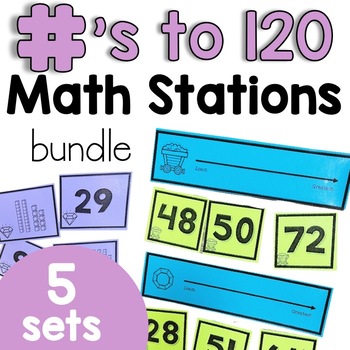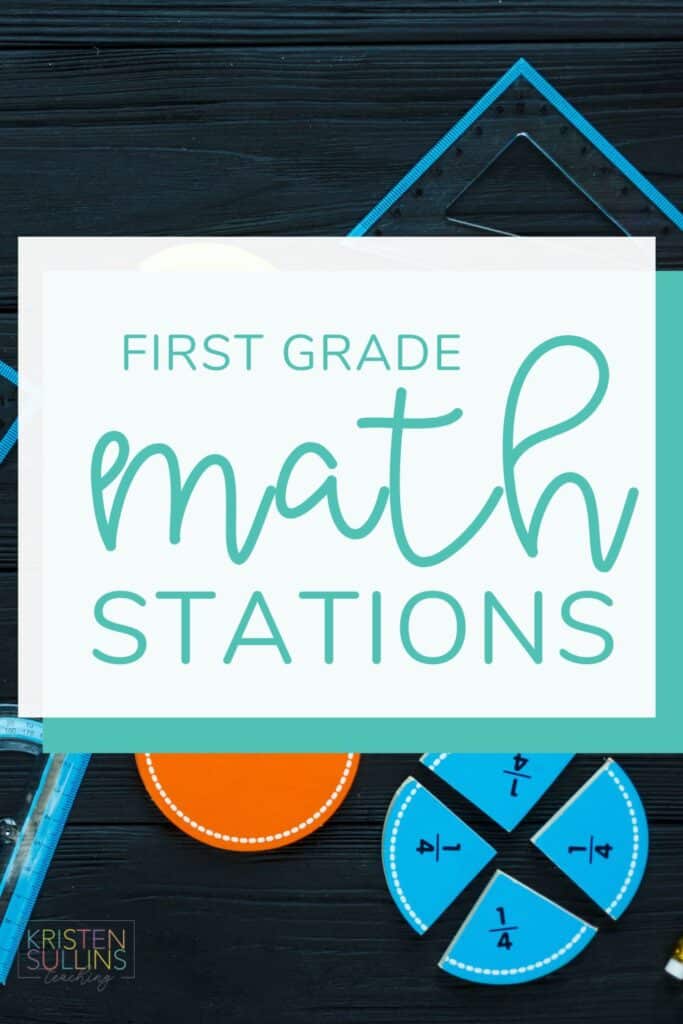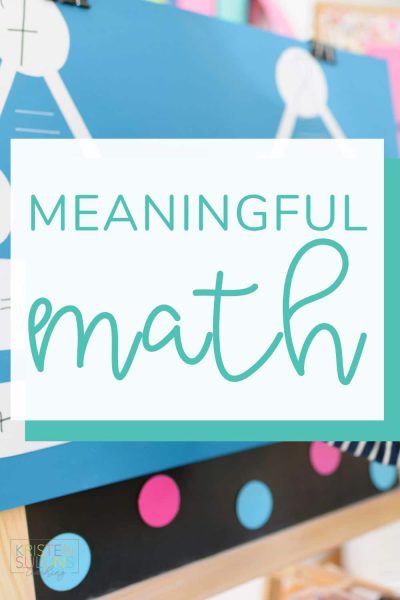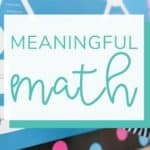Let's talk about how to make math “meaningful” in first grade.
Math time (insert dramatic music here) hasn’t, for me anyway, always been the most enjoyable subject to teach. I don’t know what has happened because, as a kid, math was my jam! I loved it! It made sense, had clear rules and a lot of the rules required memorizing, which for me just worked. Reading was my least favorite thing because it was a struggle for me, but now that’s my favorite thing to teach!
Anyway, enough about me, let’s get back to math. Like most things, the approach for teaching math is constantly changing. I’ve noticed a big change in my students' excitement about math in recent years. You’ll always have students who don’t love math, but in the past math time has been something my students were looking forward to! In recent years, however, it hasn’t been that way. So I’ve had to really reflect and ASK MY STUDENTS what it is they aren’t loving.
After hearing, “it’s boring” “confusing” “dumb” and a load of other undesirable words, I knew something needed to change.
Incorporating a variety of ways to teach math has really worked for me. Here are some of the key things I have done, used and focused on that I’ve found make my math lessons more purposeful and enjoyable.
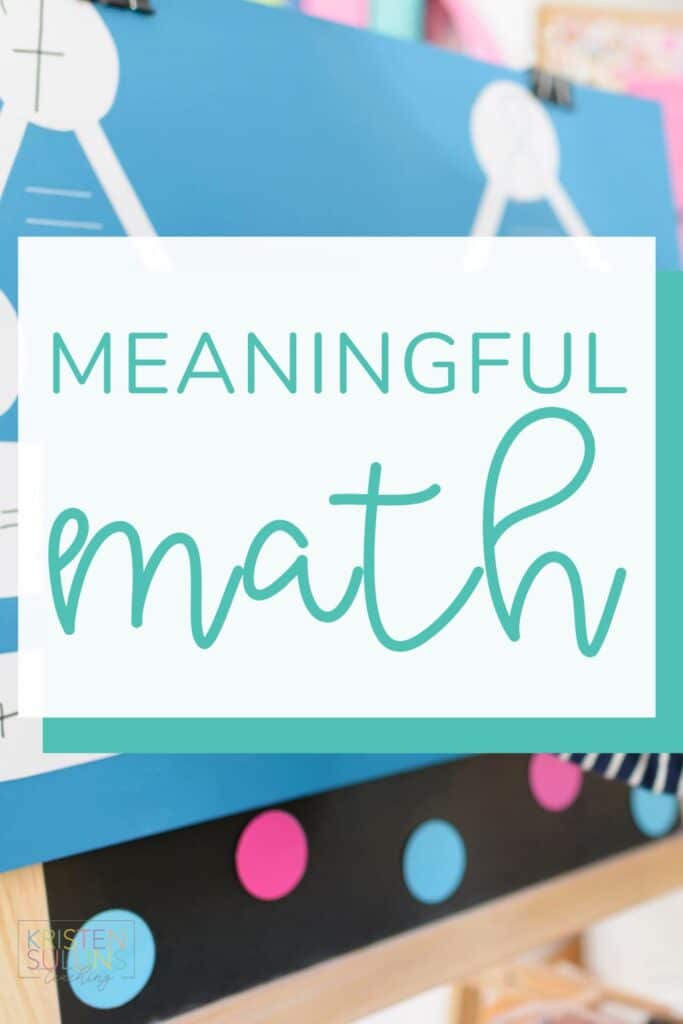
Math Vocabulary in First Grade
Yes! Just like with reading, teaching vocabulary in math is vital!!! I remember hearing at a math conference, “if you’re going to walk the math walk, you better talk the math talk!” Students are going to be a lot more comfortable with math concepts if they have a strong understanding of the math vocabulary we are using.
As teachers we are on a time constraint, ALL day long. Our schedules look great on paper, but when turned into real life teaching it becomes unrealistic. Sometimes we may feel rushed through getting certain skills or concepts taught, and that is just not going to work. We have to slow down, allow ourselves the time to properly teach the concepts, while using correct vocabulary… and take a breath!!! That’s right. There are tons of requirements pressed down on teachers, but our students' understanding and growth is more important than a timeline. Breathe teacher breathe.
Getting back to vocabulary…
I have always loved using anchor charts in my classroom, but for math concepts and vocabulary it just isn’t realistic. There is not enough room on my wall! One thing I’ve transitioned to using are math binders. I’ve only done this one year, so there are still a lot of kinks to work out, but ultimately what I did was print off class sets of important math concepts and vocabulary words. We would add these to our math binder **AFTER they have been fully taught and practiced.
** this is very important. In first grade, handing students a page with something they have 0 clue about is like handing a seal a crayon. What do you expect them to do with it? Once the concept or new vocabulary has been taught, is fully understood and has been practiced; THEN you add it to the binder.
Students can utilize the items in their binder whenever needed.
Building Math Fluency in First Grade
Well would you look at that! Not only are we going to focus on vocabulary in math, but fluency too?! You bet we are! Math fluency is just as important in math, as fluency is in reading. Building math fluency is a YEAR-LONG process that needs to be given time and practice opportunities.
There are a lot of great math fluency resources out there that include quick practice workbooks, games and other activities. I lean towards the games because they are so fun and students don’t even realize they are working on improving their math skills.
Manipulatives
Did I just hear you say, “duh”? Good. At this point, there is such a huge amount of research supporting the use of manipulatives in early grades. I hope every school is providing their teachers with these resources. If so, skip to the next section… if you have no idea what I’m talking about however, keep reading.
Math manipulatives are physical objects students can use and manipulate to help them solve math problems. These can be cubes, beads, m&m’s and so much more. Making math something you can hear, read, see and manipulate creates connections for your students that helps math make sense. Giving our students a variety of strategies is important so they can decide what works best for them. I have students who HAVE to see it on paper (drawing), while others use cubes or do it in their head. The goal is to help them make sense of math, build a foundation so when math becomes more difficult they can pull from the strategies we teach to support them.
Math Read-Alouds
I know I don’t need to tell you that read-alouds can be done in any subject, but math is often overlooked as a good time to have one! Finding books that go along with each lesson isn’t realistic, but one for each math unit is totally doable and brings something students love into math time. You can also reuse the book you've selected throughout the unit to help with new concepts,vocabulary or key understandings.
Collaboration
Incorporating time for students to work together is so important. Not only does it build relationships, support learning and provide practice; it is also fun! Students can work together and help one another solve problems. I don’t incorporate this into every math lesson, but I try to make time for students to collaborate weekly. It could be a word problem they have to solve together, a game or something else. Anything to get them communicating and using those important math vocab words.
More Ways to Make Math Meaningful in First Grade
Technology
Is there a kid out there anymore who doesn’t know how to operate an iPad or computer?? It’s insane how times change and the fact that I just said that makes me feel old. There are a lot of great interactive activities you can do on a smart board/interactive whiteboard and these can be used daily. I like to incorporate them into my introduction to a new lesson. It’s engaging and interesting to my students.
I know students LOVE technology so I make a point to incorporate it into my math stations too. I have both Chromebooks and iPads students can use, and our campus has a few math games students learn how to use at specials (computer), so that’s nice. My students love starfall math, BigBrainz and prodigy. So those are my “go to’s”.
Building independence
In the primary grades, we are building the foundational math skills students will need in upper grades and life. We are teaching skills and strategies students will continue to use and develop as they grow. It is our job, as I’ve previously stated, to provide them with a variety of these things so they can use what works best for them. Independence is crucial in order for our students to be successful, not only in math but in life. We need to provide whole group lessons, small group practice, one-on-one intervention and ample practice time in order to help our students feel confident in what it is we are teaching. We need to make math relatable, interesting, engaging and fun (because it actually is!).
By making math meaningful to our students, we will support the building of their independence in math!
In order to make math meaningful, fun and interesting to our students we need to provide them with the time and resources to really understand what it is that they are expected to accomplish. Explaining goals, teaching strategies and providing time to practice is not only vital, but necessary.
Math Activities for First Grade
This bundle includes ALL of the math stations you need to help your students master building, comparing and ordering numbers from 1-120! Students must order numbers on an open number line, identify place value and determine greater than, less than, or equal to using comparative symbols.
This resource can be used to:
-whole group review of numbers to 120
-application in small group instruction
-engagement in a hands-on math center
Each product includes three different activities.

